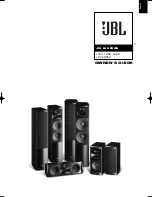
Page
12 of 32
Model 13352, 13362, and 13372 Addressable Amplified Speaker Assemblies
Pub.: 43004-030A
d:\radio products-draft\gtc 43004\43004-030a\43004-030a.doc
06/05
Functional Description
Each Addressable Amplified Speaker is capable of two different modes of operation; Generic Operation
and Selective Operation.
Generic Operation
While in the “off” state or sleep mode, the speaker assembly detects the presence of a page closure
(Model 13352) or carrier-detect (Models 13362/13372) and becomes activated. Any audio that is being
transmitted is now broadcast over the loudspeaker while the page closure is present. After a
preprogrammed amount of time after the page closure (Model 13352) or carrier-detect (Model
13362/13372) is no longer present, the speaker assembly returns to the “off” state. Each speaker is
factory-programmed for this mode of operation (default).
N
OTE
:
The speaker can be programmed via the XAC1000A CARD Suite software to provide receive
capability at all times. In this mode, the speaker should be connected to a constant external 12 V dc
power supply. The speaker “on” state can be overridden by the shutdown closure input, which returns the
unit to its “off” state. This can be used in areas where an all-page command is given but the speaker local
to the page location is turned off to reduce feedback. The “shutdown” closure input could be from a
handset hookswitch, relay, or other similar device.
Selective Operation
Selective Operation allows addressable access to each speaker using DTMF or 2-Tone signaling. Either
“DTMF” or “2-Tone” must be selected via the CARD Suite programming software.
While in the “off” state, the speaker assembly detects the presence of a page closure (Model 13352) or
carrier-detect (Models 13362/13372) and becomes activated. The speaker assembly waits for the
preprogrammed code to enable the speaker amplifier. If the correct code is detected, the speaker
assembly determines if it is an audio message or an audio level adjustment command.
•
If it is an audio message, the speaker assembly is energized and the audio is transmitted to the speaker
output.
•
If it is an audio level adjustment command, the speaker assembly is energized and a test tone is
transmitted to the speaker output. After a preprogrammed amount of time without the page closure
(Model 13352) or carrier-detect (Model 13362/13372) being present, the assembly returns to sleep
mode.
During either DTMF or 2-Tone operation, the speaker assembly recognizes one to eight codes that can be
used for unit activation. The first code is used for individual paging, and is the only code used for remote
volume adjustments (DTMF only). Any of the other seven codes can be used for zone or all paging
functionality.
DTMF Signaling
In this operating mode, the speaker assembly detects preprogrammed DTMF tones in this operating mode.
The protocol for the DTMF symbol stream during this operation is the programmed digit length (1-8
digits) followed by a “#” DTMF symbol. The DTMF symbol stream cannot include the “*” or “#” in its
identification string. The DTMF code is programmed via the CARD Suite software application. If the
code is blank, the unit will not have this operating functionality.













































